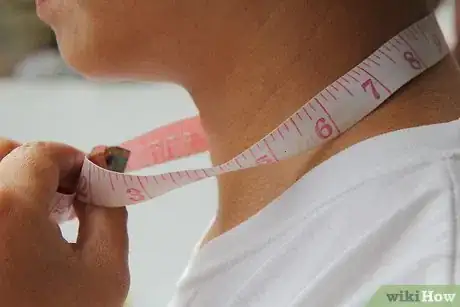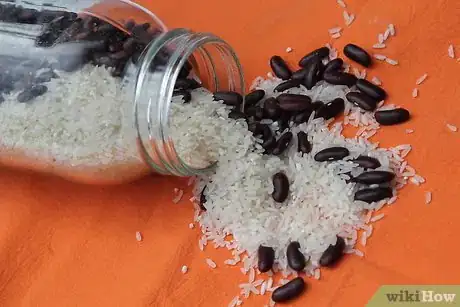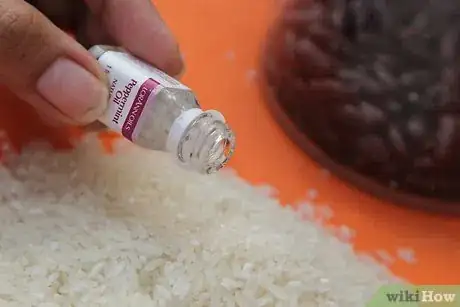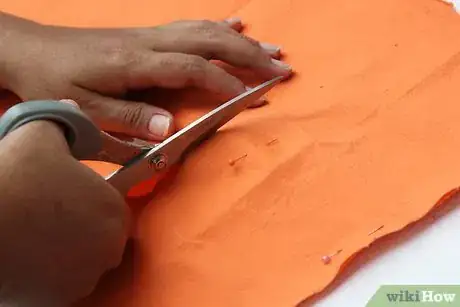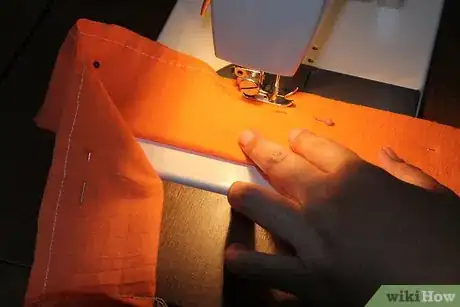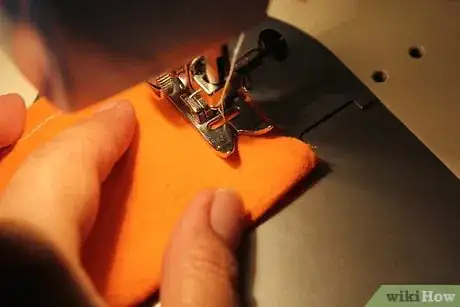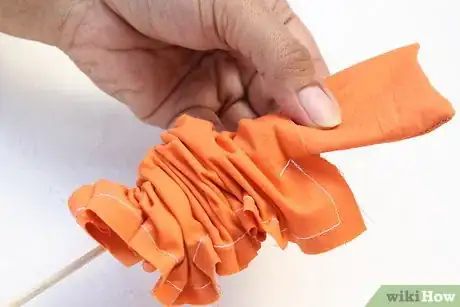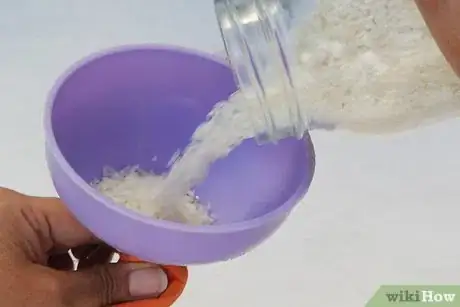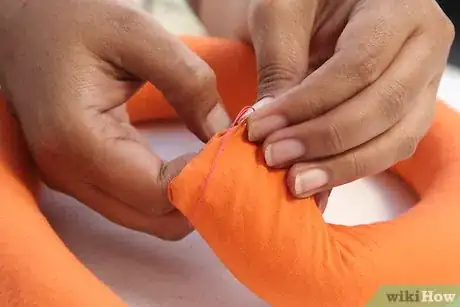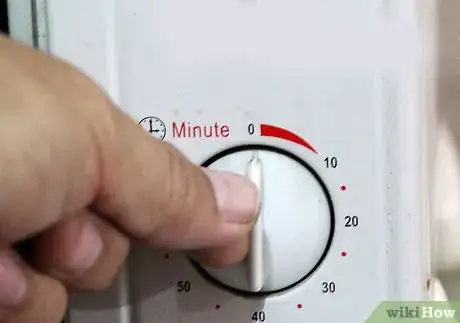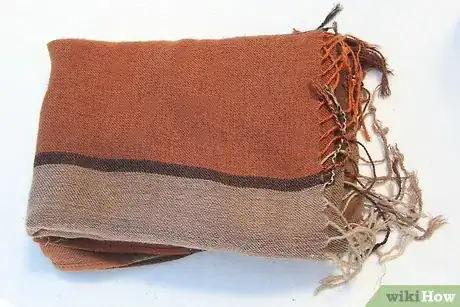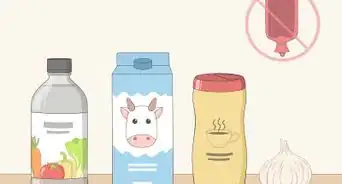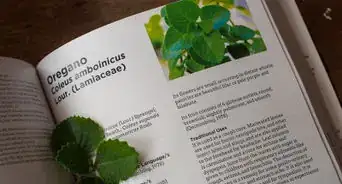wikiHow is a “wiki,” similar to Wikipedia, which means that many of our articles are co-written by multiple authors. To create this article, 17 people, some anonymous, worked to edit and improve it over time.
There are 7 references cited in this article, which can be found at the bottom of the page.
wikiHow marks an article as reader-approved once it receives enough positive feedback. In this case, 94% of readers who voted found the article helpful, earning it our reader-approved status.
This article has been viewed 256,716 times.
Learn more...
Microwavable neck wraps are used to relieve tension from overworked muscles or stress. Many people hold stress in their trapezius muscles, the muscle that extends on each side of the neck from the base of the skull to the shoulders. A neck wrap filled with grain or rice conforms to the body, giving relief to the trapezius and other muscles. Unlike traditional electric heating pads, a microwaveable wrap will cool down in less than an hour and pose less risk of overheating muscles. Aromatherapy neck wraps can be made with household ingredients and recycled fabric.
Steps
Sewing a neck wrap
-
1Choose a fabric to make your microwaveable wrap from. You can go to the fabric store to find a comfortable flannel, fleece, muslin, denim or cotton print; however, you can also use socks, old shirts, washcloth or towels. Whatever you choose to use, be sure that it contains no sparkly or metallic threads, wires, bead, etc, as these will catch fire when microwaved later on.[1]
- A large, thick sock is the easiest cloth to use, since it is already round and you do not need to sew all the sides. You can also use an old hand towel and fold it in half lengthwise, for another easy option.[2]
- If you choose a loose weave on your fabric, also find or buy a flannel or muslin cloth to use as your inner lining, so your filling does not leak out.
-
2Measure your neck with a fabric tape measure, and add 1/2 inch (1.3 cm) to account for seams. If you do not want to measure, a length of about 20 inches (51 cm) width of 5 inches (13 cm) will work for most necks.
- If you want to use the wrap for other parts of your body, like your back, be sure to extend the wrap a few extra inches or cm to make the wrap more versatile.
Advertisement -
3Choose your filling. People use long grained white rice, flax seed, buckwheat, barley, oatmeal, feed corn, cherry pits, beans or millet seed. If you are making a rice neck wrap, make sure you do not use instant rice, which may cook when heated.
-
4Add an aromatherapy scent. Although this is not necessary, a relaxing scent can help to relax and remove tension from your body. Choose an essential oil or spice and mix it with your filling of choice in a large bowl. Let the filling sit with the scent for a day or so and stir often to make sure the scent is distributed throughout the grain.
- For example, you can use approximately 5 drops of an essential oil like lavender, peppermint or rose. You can also use 5 pinches of spices like cinnamon, cloves or rosemary. You can also mix with rose or other flower petals.
-
5Cut the fabric to the measurements you just took, making sure to leave room for seams. If you are using a towel or a sock, this will not be necessary. If you plan to have an inner and outer fabric, cut rectangles out of both the lining and cover material, making the lining slightly smaller - about 1/2 inch (1.3 cm).
-
6Fold the fabric lengthwise with the inside fabric facing out. Pin it in place across the open length and both ends so the seams stay together while you sew.[3]
-
7Sew the length and 1 end with either a sewing machine or needle and thread. Make sure your stitches are very close together so small grains of rice do not poke out of the seams.[4]
-
8Sew the remaining end, leaving approximately a 1 inch (2.54 cm) opening at the end of this remaining side.
- If you are sewing an inner and outer bag, leave 1 end all the way open on the outer bag. You will need to open the outer bag regularly while you heat the inner bag.
-
9Turn the fabric right side out through the 1 inch (2.54 cm) opening on the side.
-
10Pour the aromatic grain or beans into the sack or inner sack with a funnel or a measuring cup with a spout. Experiment with the amount. Most neck wraps are 1/2 to 3/4 full. Do not fill it all the way, as the less full it is, the more it will conform to your body.
-
11Sew up the remaining seam tightly with a needle and thread or a zipper foot on your sewing machine. Although this 1 inch (2.54 cm) of the seam will face out, it is important to be able to rip this seam out and replace the grain if the bag loses its scent or gets wet.
- If you are making an outer bag, hem the 2 sides of the outer bag in and adhere Velcro to each side so that you can open and close it easily.
-
12Heat your bag, or inner bag, in the microwave for 90 seconds. If you do not feel it is warm enough, heat in 30 second intervals. Place around your neck and over your shoulders until the neck wrap cools, approximately 20 minutes.
-
13Wash the fabric and replace the filler on your neck warmer every 3 to 6 months, depending upon the heaviness of use. If you really want to get fancy, make the pillow, and then make a cover for it that can be easily washed, yet removed during the microwaving process. Just remember to make the cover measurements slightly larger in order to accommodate the inner pillow. This makes an excellent gift. Good Luck!
Expert Q&A
Did you know you can get expert answers for this article?
Unlock expert answers by supporting wikiHow
-
QuestionWhat else can be used for filling aside from rice, beans, or grain?
 Zora Degrandpre, NDDr. Zora Degrandpre is a Natural Health Doctor and Licensed Naturopathic Physician in Vancouver, Washington. She is a grant reviewer for the National Institutes of Health and the National Center for Complementary and Alternative Medicine. She received her ND from the National College of Natural Medicine in 2007.
Zora Degrandpre, NDDr. Zora Degrandpre is a Natural Health Doctor and Licensed Naturopathic Physician in Vancouver, Washington. She is a grant reviewer for the National Institutes of Health and the National Center for Complementary and Alternative Medicine. She received her ND from the National College of Natural Medicine in 2007.
Natural Health Doctor
-
QuestionI want to make a microwaveable heat bag and fill it with buckwheat. However, I am unsure about which type of buckwheat is appropriate: should I use raw or roasted buckwheat hulls?
 Zora Degrandpre, NDDr. Zora Degrandpre is a Natural Health Doctor and Licensed Naturopathic Physician in Vancouver, Washington. She is a grant reviewer for the National Institutes of Health and the National Center for Complementary and Alternative Medicine. She received her ND from the National College of Natural Medicine in 2007.
Zora Degrandpre, NDDr. Zora Degrandpre is a Natural Health Doctor and Licensed Naturopathic Physician in Vancouver, Washington. She is a grant reviewer for the National Institutes of Health and the National Center for Complementary and Alternative Medicine. She received her ND from the National College of Natural Medicine in 2007.
Natural Health Doctor
-
QuestionCan you use plastic beads to fill the bean bags?
 Zora Degrandpre, NDDr. Zora Degrandpre is a Natural Health Doctor and Licensed Naturopathic Physician in Vancouver, Washington. She is a grant reviewer for the National Institutes of Health and the National Center for Complementary and Alternative Medicine. She received her ND from the National College of Natural Medicine in 2007.
Zora Degrandpre, NDDr. Zora Degrandpre is a Natural Health Doctor and Licensed Naturopathic Physician in Vancouver, Washington. She is a grant reviewer for the National Institutes of Health and the National Center for Complementary and Alternative Medicine. She received her ND from the National College of Natural Medicine in 2007.
Natural Health Doctor
Warnings
- Be very careful not to over overheat the bag and place it directly on your skin. Allow it to cool if it is too hot, and only heat it for 30 to 60 seconds when using it on a child.⧼thumbs_response⧽
Things You'll Need
- Cloth
- Fabric tape measure
- Long grained white rice, flax seed, buckwheat, barley, oatmeal, feed corn, cherry pits, beans or millet seed
- Essential oil, flower petals or spices
- Sewing machine or sewing needle and thread
- Pins
- Velcro (optional)
- Microwave
References
- ↑ https://sew4home.com/projects/pillows-cushions/microwavable-rice-filled-heating-pads
- ↑ https://www.thriftyfun.com/tf/Health_and_Body/Home_Remedies/Microwave-Heating-Pads.html
- ↑ https://lifeasmom.com/diy-on-a-dime-microwaveable-heat-packs/
- ↑ https://lifeasmom.com/diy-on-a-dime-microwaveable-heat-packs/
- http://www.cancerlynx.com/morericebag.html
- http://tipnut.com/make-your-own-microwave-heating-pad/
- http://www.gardenguides.com/84952-make-lavender-rice-neck-wrap.html
- http://en.wikipedia.org/wiki/Trapezius

